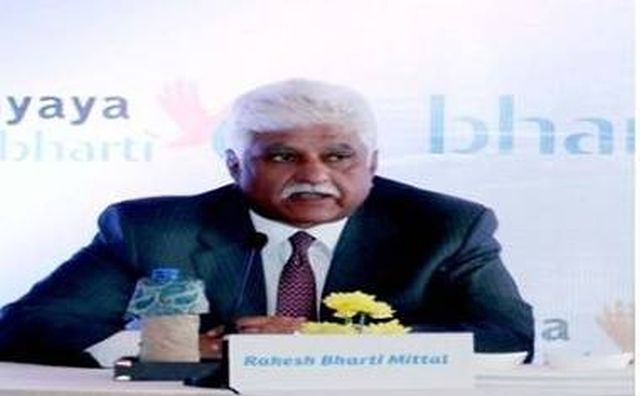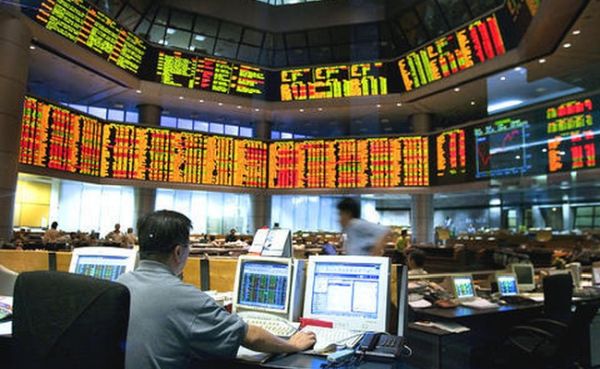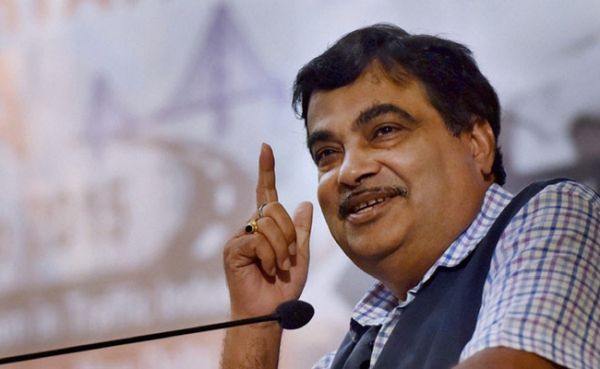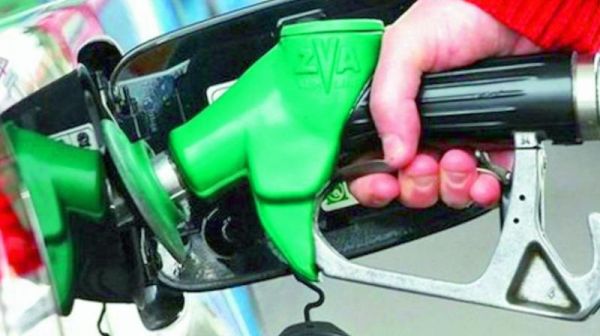
by admin | May 25, 2021 | Business, Economy, Large Enterprise, Markets, News

CII President Rakesh Bharti Mittal
New Delhi : Industry chambers Confederation of Indian Industry (CII) on Monday said that it expects India’s economy to grow at 7.3-7.7 per cent in 2018-19 on the back of “sustained structural reforms”, recovery in global markets and a normal monsoon.
The industry body in a statement said that “sustained structural reforms” have led to a rebound in the country’s economy as businesses across several key sectors experience firm growth trends.
“The impact of sustained structural reforms is now being felt on the ground as a mammoth economy is turning around,” CII President Rakesh Bharti Mittal was quoted as saying in a statement.
“Businesses across several key sectors are experiencing firm growth in sales and orders, indicating better capacity utilisation and higher investment expectations.”
According to CII, strong rural consumption is reflected in sectors such as consumer non-durables, two-wheelers and tractors.
“The feedback from businesses is that the rebound in the economy is now firmly entrenched and the positive impact of the actions taken by the government, including major structural reforms, are being felt on the ground,” Mittal added.
The industry body credited the growth trend on prudent macroeconomic management which it said has encouraged “growth and investments for capacity expansion are being planned as demand conditions recover”.
“The government has avoided slippage in the fiscal deficit despite the rise in oil prices. Inflation too, has remained under control to the extent possible even as cost of oil is going up,” the statement said.
CII noted that “capital goods” sector has shown a steady improvement and order books are filling up. This sector is a key indicator of a country’s economic activity.
“Exports too, are poised to grow at a faster pace in the current fiscal year, which started on a good note,” the industry body said.
The CII statement pointed to eight key areas where reform measures have “unlocked growth forces” like the introduction of the GST; strong emphasis on ease of doing business; Insolvency and Bankruptcy Code; increase in the the Foreign Direct Investment (FDI) limits in sectors such as insurance, real estate and defence manufacturing.
Besides, a rise in infrastructure spend; initiatives to strengthen micro, small and medium enterprises (MSME) and “initiatives in agriculture have helped improve rural incomes”.
In addition, CII said that introduction of fixed term employment across sectors “will impart flexibility to the use of labour”.
“With several major development campaigns such as Make in India, Digital India, Swachh Bharat, Clean Energy and others gaining traction as well as recovery in the global economy and expectations of a normal monsoon, CII expects growth to record 7.3-7.7 per cent in 2018-19,” the statement added.
—IANS

by admin | May 25, 2021 | Economy, Markets, News
 By Rituraj Baruah,
By Rituraj Baruah,
Mumbai : The key Indian equity indices settled with marginal gains in the week ended Friday after largely volatile trade throughout the week.
Value buying, a fall in global crude oil prices and appreciation in rupee on Friday led to a nearly one per cent rise in both the BSE and NSE on the week’s last trading day, which eventually lifted the indices on a week-on-week basis.
The barometer 30-scrip Sensitive Index (Sensex) of the BSE rose by 76.57 points or 0.22 per cent to close at 34,924.87 points on a weekly basis.
The wider Nifty50 of the NSE closed the week’s trade at 10,605.15 points — up 8.75 points or 0.08 per cent — from its previous close.
“Markets ended the week with marginal gains after a sharp bounce back from the lows of 10,417 points (on Nifty) towards the end of the week. Buying by domestic institutions, stabilisation of rupee and crude prices helped the Nifty to make a sharp recovery. This week’s marginal gain came after the sharp fall seen last week,” said Deepak Jasani, Head of Retail Research at HDFC Securities.
Equity99’s Senior Research Analyst, Rahul Sharma said: “Volatility was high last week due to political developments in Karnataka. Also, weak global clues and high crude prices added to sentiments.”
“Markets last week ended flat, but (there was) extremely high volatility influenced by quarterly results, crude oil price movement and geopolitical news,” said Prateek Jain, Director of Hem Securities, adding that market observed a slump in the crude oil and dollar improved the frail macro indicators lighting a fire in the Nifty.
On the currency front, the rupee strengthened by 23 paise to close at 67.78 against the US dollar from its previous week’s close of 68.01 per greenback.
In terms of investments, provisional figures from the stock exchanges showed that foreign institutional investors sold scrips worth Rs 3,227.06 crore, while the domestic institutional investors purchased stocks worth Rs 4,364.93 crore during the week.
Figures from the National Securities Depository (NSDL) revealed that foreign portfolio investors (FPIs) divested equities worth Rs 2,988.86 crore, or $438.81 million, in the week ended May 25.
Sector-wise, PSU Banks, IT and pharmaceuticals gained the most, while realty, energy and FMCG lost the most, Jasani told IANS.
The top weekly Sensex gainers were: State Bank of India (up 11.62 per cent at Rs 267); Bharti Airtel (up 4.06 per cent at Rs 376.65); Infosys (up 3.81 per cent at Rs 1,228.80); Coal India (up 3.62 per cent at Rs 276.05); and ICICI Bank (up 3.53 per cent at Rs 296.50 per share).
The major losers were: ONGC (down 5.24 per cent at Rs 175.35); Tata Motors (DVR) (down 4.74 per cent at Rs 171.75); Tata Steel (down 4.11 per cent at Rs 567.20); ITC (down 3.62 per cent at Rs 271.95); and Tata Motors (down 3.62 per cent at Rs 294.20 per share).
(Rituraj Baruah can be contacted at rituraj.b@ians.in)
—IANS

by admin | May 25, 2021 | Economy, News, Politics

Nitin Gadkari
New Delhi : With petrol and diesel rates skyrocketing on a daily basis, Road Transport and Highways Minister Nitin Gadkari on Friday advocated bringing fuel under the GST to curb the price hike.
“Petrol and diesel should have been brought under the Goods and Services Tax. I asked officials during a presentation if we bring fuel prices under GST will it benefit the states or not.
“They said ‘yes’, they will benefit,” Gadkari said at a news conclave here on the four years of Prime Minister Narendra Modi’s government.
He said, however, the states were wary of losing revenue on account of taxes they collect from fuel prices and liquor.
“It will be good if fuel prices are brought under GST. This will not only reduce the fuel prices but will also increase the government’s revenue.”
He, however, said it was his personal opinion, and the ultimate decision regarding this remained with the Petroleum Ministry.
The Minister said fuel prices were surging because of international crude oil rate.
“Earlier, we were giving subsidy on the import (of fuels). When the rates came down, the subsidy was removed. We are part of a global economy…The price of petrol and diesel are increasing due to rise of their price in international rates.”
He said the money that was saved from removing subsidy on fuel allowed the government to give free Liquid Petroleum Gas (LPG) connections to eight crore families across India.
—IANS

by admin | May 25, 2021 | Economy, News, Opinions
 By Taponeel Mukherjee,
By Taponeel Mukherjee,
Higher oil prices, the consequent inflationary pressures and a weaker rupee have dominated recent news headlines. While short-term measures to deal with these macro-economic trends are essential, it is also necessary to look at the long-term structural changes required to bring about stability in the Indian economy and reduce exposure to the vagaries of macro-economic trends.
Environmental concerns alone do not drive India’s renewable energy push today: Economic and financial compulsions are even more critical. Policies have helped expand the sector, but figures such as an expected $105 billion crude oil import bill for the country for the financial year 2018-2019 (according to the Oil Ministry) give us an idea of the urgent need to further reduce our dependence on imported fossil fuel and find alternative sources of energy.
For “energy independence”, renewable energy is the elixir that the country needs and it will mean addressing more significant policy issues and creating a policy framework that supports “energy independence”, factoring in a multitude of elements.
First, the proposed 70 per cent duty on imported solar cells and modules merit re-examination. While this is needed to encourage domestic solar cell manufacturers, such high import duties will also slow down solar energy expansion.
The critical question is: Will the economic gains from the proposed duty be more significant than the benefits of a vibrant and growing solar sector using cheaper imported (read Chinese) solar products?
Critical evaluation of such questions will help frame coherent policies across the energy spectrum. Weighing competitive advantages of one policy versus another to create an overall framework that is consistent will help expedite renewable energy creation.
The fact that facilitating renewable energy expansion is critical not just from a financial perspective but also a national energy security perspective should inform such policies.
Interest rate policies also have a bearing on the renewable energy sector, and the sector needs to be cognizant of the impact that higher interest rates may have on debt funding for both current and future projects.
Renewable energy auctions have seen tariffs nosedive over the last two years. While this is great for the consumer, the question is whether the renewable energy sector in India is ready for a higher interest rate regime.
Renewable energy players must look at a careful analysis of converting floating interest rate loans to fixed rate loans and borrowing for longer durations where necessary to better prepare for a higher interest rate regime.
India needs to ensure that the pace of renewable energy expansion is affected as little as possible from rising interest rates.
With the expansion of renewable energy capacity, it is essential for the energy industry and the government to take stock of the risk of stranded thermal power assets. The primary concern is how do we deal with thermal plant assets that aren’t financially viable any more.
In a recent report entitled “An Assessment of India’s Energy Choices: Financial Performance and Risk Perception”, Vinit Atal and Gireesh Shrimali bring forth crucial points regarding the stranded asset risk.
As renewable energy increasingly becomes a greater source of energy at competitive price levels, the risk of stranded thermal plants goes higher. Unviable thermal power plants lead to more stranded assets, thereby adding to the Non-performing assets (NPAs) for banks. Atal and Shrimali hold that investors “perceive renewable energy power investments to be less risky than fossil fuel power investments”.
The government needs to think of the long-term ramifications of the growth of renewable energy on existing thermal power plants and any new thermal power plants in the pipeline. Given the long-dated nature of power plant assets, closer scrutiny around asset viability is warranted to avoid a build-up of more NPAs.
India has made significant progress over the last decade in the renewable energy sector. However, given the rising energy needs and the dependency on energy imports, now is the time to push the energy “independence” agenda further and faster. Greater policy clarity, consistency in policies and a focus on the broader economic mandate are urgently needed.
(Taponeel Mukherjee heads Development Tracks, an infrastructure advisory firm. The views expressed are personal. He can be contacted at taponeel.mukherjee@development-tracks.com or @Taponeel on Twitter)
—IANS

by admin | May 25, 2021 | Opinions
 By Amit Kapoor,
By Amit Kapoor,
Just as the Indian economy was limping back to normalcy after an elongated period of subdued growth, oil prices have thrown a spanner in the works right on cue.
Oil prices, which had fallen to sub-$40 levels, are back with a vengeance having climbed to over $75 a barrel recently; the highest since 2014. It is expected to go even higher with some reports suggesting that Saudi Arabia is trying to target a price of $80 per barrel. The economic crisis in Venezuela and the inevitable sanctions on Iran by the United States will only take more oil off the world markets and worsen the situation.
As usual, India faces worries of rising inflation, government spending and current account deficit. The last time oil prices were at their peak, India was being pegged as one of the “fragile five” economies that were most at risk from the infamous “taper tantrum” of the US Federal Reserve. At the time, the current account levels of the economy were expectedly high at 4.8 percent due to the massive import bill. Then, some responsible policy activism by the Reserve Bank of India and a crash in the world oil markets brought India back from the brink to a point where the current account deficit had narrowed down to 0.7 percent in 2016-17.
Now that oil prices are back up again, the current account deficit has begun to widen to levels as high as 2 percent. This is not a problem in itself as India has accumulated a healthy amount of dollar reserves over time. But, with the rupee consistently falling since the start of the year to become the worst performing currency in Asia, the import bill might soon spiral out of control. Even exports are not rising at a commensurate level to compensate for it. In fact, export growth had turned negative in March.
The timing of the oil price rise could not have been worse for the government. Several state elections are lined up and the general elections are barely a year away. Any additional burden on the consumer will have political backlash. But bringing back controls on petroleum products that have been gradually eliminated since 2014, will have far-reaching economic ramifications.
Before deregulation took place, the petroleum companies were asked to sell below cost if world oil prices rose and their books were balanced through government-issued IOUs. This ended up wiping out any additional cash reserves of the companies leaving them to borrow to sustain operations. As a result, these oil companies are barely left with any capital to undertake infrastructure investment and R&D expenditure. If this had not been the case, India could have made massive long-term gains with higher oil exploration to meet domestic demand and refinery upgradation to meet global emission standards. So, reverting back to the old system of controls should be out of the question.
The government is, therefore, left with two clear options. The first is to let the market forces take over and allow the companies to raise prices gradually. However, inflation would become a serious irritant within the economy in that case. It would eventually provoke a rate hike from the Reserve Bank of India (RBI) and dampen investment sentiments across the economy that have only recently shown signs of revival.
Second, the government could reduce the indirect taxes on petroleum products and balance out the price rise. After all, the Centre and State taxes combine to make for an effective rate of about 100 percent for petrol and 65 percent for diesel. So, there remains immense scope for tax reduction. However, such a move would reduce the revenue collection of the government and take the country further away from the fiscal commitments it had made. Since the Centre and the State derive almost 40 percent of their revenue from petroleum products, it is not an easy loss to bear.
The situation boils down to this. Given rising oil prices, either the government lets free market reign and allow for inflation or reduce taxes to maintain prices at same level and possibly give up on fiscal consolidation, which would also eventually be inflationary. The government is truly between a rock and a hard place.
But when oil prices had crashed after 2014, the government had not passed off the full benefits to the consumers by levying higher taxes with the understanding that the taxes would be reduced when world prices flare up. This was the perfect mechanism to ensure consumption smoothening and maintain adequate revenue levels of the government. Therefore, a downward adjustment of petroleum taxes is overdue. The best way out would be to do so and pursue other measures to maintain fiscal commitments.
(Amit Kapoor is chair, Institute for Competitiveness. The views expressed are personal. He can be contacted at amit.kapoor@competitiveness.in and tweets @kautiliya. Chirag Yadav, senior researcher, Institute for Competitiveness, has contributed to the article)
—IANS





